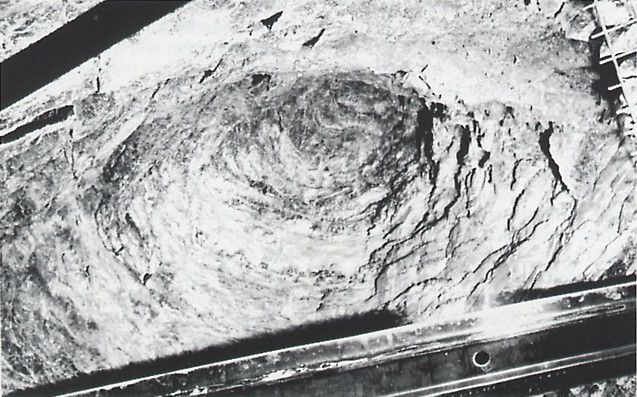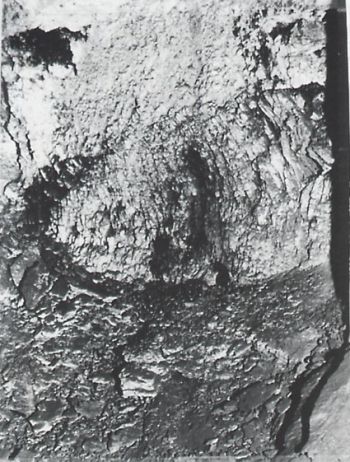An outburst cavern is defined by features such as its size, shape, location of cavern in the working face and the orientation of the cavern with respect to the axis of the mine workings (Lama & Bodziony, 1996).The size of the cavern is defined using the width, depth and height of the cavern to simplify the differences in shape. The volume obtained using these measurements is always less than the volume of material collected from the mine due to the expansion of the ejected coal. Thus, due to the irregular dimensions involved and the expansion of ejected material, the size of an outburst cavern is very difficult to define.
The shape of an outburst cavity is considered by Cis (1971) to be influenced by three factors. These are:-
Effect of gases present in the seam;
-
Presence of soft layers present in the coal seam; and
-
Gravitational effects.
Three factors affect the caverns and cause them to form into one of three shape groups:
-
Mug or pear
-
Pocket
-
Cone
Mug shaped caverns are known to occur around the corner of a roadway. These caverns are elongated and run at a low angle to the face. The attached figure showing a pear shaped cavern occurred in the course of drilling a 300mm diameter hole in the face of a roadway caverns of pocket shape are so named due to the large amount of crushed coal that remains in the cavern. These are commonly seen to occur in steep seams and in seams of low dip when mining is along the dip rise. The combination of unexpected displacement of loose coal and the steep seam gas characteristics cause pocket shaped caverns. Cone shaped caverns occur as a result of small outbursts and these outbursts are stress driven. The failure occurs at right angles to the bedding plane. The cone shape is can also be seen as an outburst that is dying out (Lama & Bodziony, 1996).



